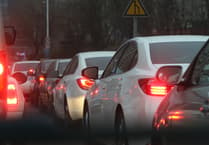Bath and North East Somerset Council has refused to meet with the group who blocked a liveable neighbourhood through the courts as the council presses on with the plan.
A group of Bath locals brought a legal challenge against the council’s plan to close Winifred’s Lane to through traffic in August, as they warned it would push more traffic past schools. The council did not contest the legal challenge, but has made a new order to bring in the scheme.
The group who brought the legal challenge said it was extremely disappointed at the move.
The group added: “We ask again that our voices are heard, we meet and a compromise reached.”
The council’s cabinet project lead for highways, councillor Joel Hirst, said: “The trials in Winifred’s Lane, Catharine Place and Gay Street are being introduced under our liveable neighbourhood programme with the aim to reduce excessive traffic in residential areas, keeping through-traffic on the main road and dispersing local traffic across a wider area and creating safer routes for walking and cycling through the area.
“It was always the intention to run the trials as soon as the procedural errors in the original legal notices had been addressed, which is now the case. When launched, the council looks forward to receiving feedback from all of the community about the impacts of the schemes before any decision is made.”
The scheme will run as a trial for at least six months and a consultation will run at the same time. A decision will then be taken on whether to make the scheme permanent. It is part of the Lower Lansdown and Circus Area Liveable Neighbourhood which would also include stopping through traffic on Catharine Place and a major overhaul of Gay Street. Roadworks are due to take place from November 1 to November 6.
The group added: “The council has made no changes to the design of the Winifred’s Lane ETRO [experimental traffic regulation order], despite our best efforts to explain the dangers and seek compromise.
“It’s clear that the same issues as previously identified will persist: much more traffic will likely now pass two junior schools and children being walked to school; local residents will be forced to access their homes via more dangerous routes; those living on other unclassified roads in the area should expect redirected traffic […]; and the much greater distances involved in the alternative routes for necessary journeys mean this can be expected to contribute to increased levels of carbon emissions.”
They added: “Ultimately, this scheme benefits one group of residents over and above those living in poorer socio-economic areas. Ironically, the BANES LTN strategy paper says: ‘Low traffic neighbourhoods are not about rewarding one group of people while punishing another.’ Very sadly it appears that key BANES councillors don’t actually believe this.”
The council had originally planned to bring in 15 liveable neighbourhoods across the city, but this has been cut back to 11 due to “funding constraints”





Comments
This article has no comments yet. Be the first to leave a comment.